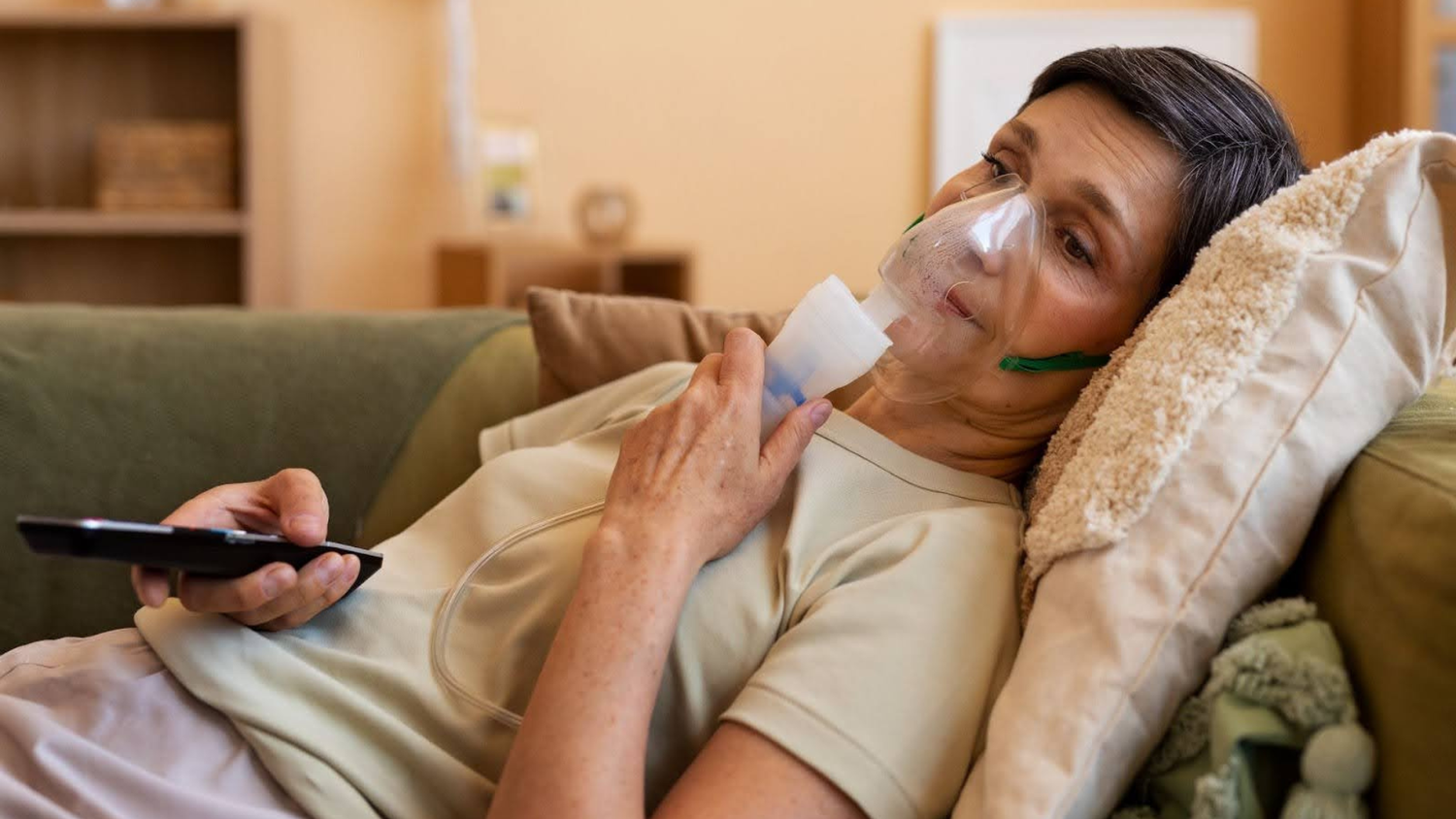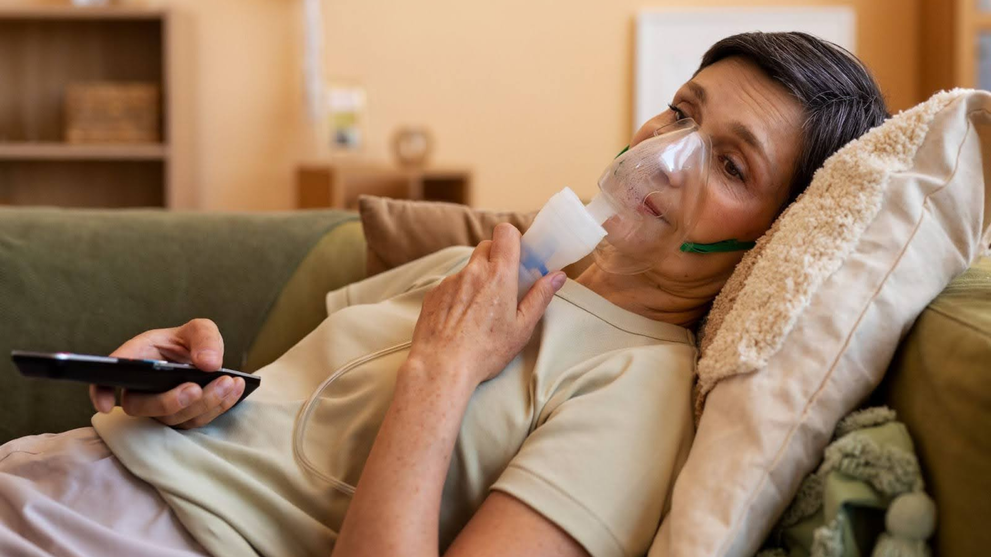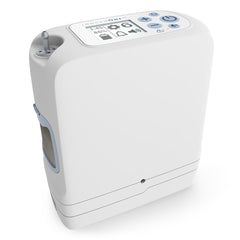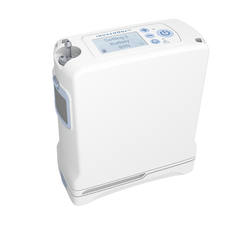Key Takeaways:
- Importance Of Home Oxygen Therapy: Home oxygen therapy supports individuals with respiratory conditions by maintaining healthy blood oxygen levels and improving overall quality of life through consistent, personalized care at home.
- Understanding Prescriptions And Equipment Options: Knowing how prescriptions work, selecting the correct oxygen equipment, and following daily maintenance routines help patients and caregivers manage therapy safely and effectively.
- Safety Precautions And Travel Considerations: Fire safety practices, proper equipment handling, and travel planning are vital for safe home oxygen therapy, ensuring protection for both patients and their living environments.
At Help Medical Supplies, quality care begins with trust. Every product we provide, from oxygen concentrators to respiratory accessories, is carefully selected for its safety, comfort, and reliability. Our commitment to customer support ensures that patients and caregivers receive the guidance they need every step of the way. With expert knowledge and dependable service, we make home medical care simpler, more accessible, and always focused on improving lives.
Understanding oxygen therapy at home can make a world of difference for individuals managing chronic respiratory conditions. This essential treatment supports healthy oxygen levels, enhances energy, and promotes better rest. From choosing the right equipment to following maintenance routines, small details matter in ensuring effective and comfortable therapy. Learning the basics of home oxygen therapy helps patients and families feel more confident in managing care safely and independently.
In this blog, we will explore how oxygen therapy works at home, what equipment and safety measures are essential, and how Help Medical Supplies supports patients in achieving practical and comfortable respiratory care.
Who Benefits From Home Oxygen Therapy
At home oxygen therapy provides essential support for individuals whose bodies cannot maintain healthy oxygen levels independently. It bridges the gap between clinical care and home comfort, helping patients breathe more easily, stay active, and improve their overall well-being. Portable systems such as the Inogen G5 Oxygen Concentrator allow users to experience freedom and flexibility while maintaining consistent oxygen support throughout their daily activities.
Individuals With Chronic Obstructive Pulmonary Disease
Home oxygen therapy is most commonly used by people with chronic obstructive pulmonary disease (COPD), including emphysema and chronic bronchitis. It improves oxygen exchange and eases strain on the heart, helps reduce breathlessness, and supports daily independence.
Patients With Pulmonary Fibrosis And Interstitial Lung Disease
For patients with lung scarring caused by pulmonary fibrosis or interstitial lung disease, oxygen therapy supplies the concentrated oxygen their lungs struggle to provide. This helps maintain blood oxygen levels, reduces fatigue, and enables better physical activity and comfort at home.
Recovery After Surgery Or Severe Illness
Oxygen therapy is often prescribed after surgery or hospitalization when lung function is temporarily reduced. It also supports recovery for those with severe asthma or respiratory infections, stabilizing oxygen levels and promoting faster healing.
People With Heart And Circulatory Conditions
Individuals with congestive heart failure benefit from oxygen therapy because it reduces the workload on the heart. Providing consistent oxygen helps alleviate fatigue, promotes better blood circulation, and enhances stamina during daily activities.
Children And Infants With Respiratory Or Cardiac Issues
Pediatric patients with conditions like bronchopulmonary dysplasia or congenital heart defects may need oxygen therapy to support growth and prevent breathing complications. Regular monitoring ensures safe and effective care as they develop.
Recognizing Low Oxygen Levels
Hypoxemia, or low blood oxygen levels, can cause fatigue, headaches, confusion, or bluish discoloration of the lips and fingertips. These signs indicate oxygen deprivation and require prompt medical evaluation for possible therapy.
Enhancing Daily Life Through Oxygen Therapy
Beyond symptom control, home oxygen therapy improves sleep, energy, and mental clarity, while also reducing the need for hospital visits. With proper prescription and equipment setup, patients can live more comfortably and confidently every day.
Understanding Your Prescription And Flow Rate
Getting started with oxygen therapy begins with understanding your prescription and how your device supports your individual health needs. The right oxygen therapy at home equipment ensures proper flow delivery and safety based on your prescribed settings. Lightweight, travel-ready models like the Inogen G4 Portable Concentrator provide both convenience and reliability, making it easier to manage therapy wherever life takes you.
What Is A Flow Rate
The flow rate is the amount of oxygen delivered per minute, measured in liters per minute (LPM). Typical prescriptions range from 1 to 5 LPM, depending on your oxygen saturation levels determined by testing. Using the correct flow rate is vital, too little oxygen can leave you fatigued and breathless, while too much can pose risks for specific conditions such as COPD. Always follow your provider’s prescribed settings and monitor your oxygen levels regularly.
Key Details Found In A Prescription
A home oxygen prescription typically specifies the device type, whether it’s a stationary concentrator, portable concentrator, or oxygen cylinder, and the exact flow rate. It may also indicate how oxygen is delivered: continuously or in pulse doses triggered by inhalation. Some prescriptions further outline when to use oxygen, such as only during sleep, physical activity, or throughout the day. A clear understanding of these details helps you use your system correctly and safely.
Adjustments And Clarifications
Your oxygen needs can vary throughout the day. Some individuals require higher flow during activity and lower settings at rest. If your prescription includes multiple rates or scenarios, ensure that these are clearly labeled and that you understand how to adjust your device accordingly. Never make changes on your own; consult your healthcare provider to confirm safe settings and get hands-on guidance if something feels unclear.
Why Following Prescribed Flow Rates Matters
Adhering to your prescribed oxygen flow rate ensures therapy is both practical and safe. Learning how to read your device’s display, track your symptoms, and record oxygen levels helps you stay consistent with your treatment. A proper understanding of your prescription enables you to manage your condition confidently and maintain stable oxygen support daily.
Comparing Concentrators, Cylinders, And Liquid Systems
Choosing the right oxygen delivery system ensures safety, comfort, and consistent therapy at home. Modern portable oxygen concentrators provide consistent performance and enhanced mobility for active users. For those who value both efficiency and freedom, the Portable Oxygen Concentrators collection includes compact, high-capacity options designed to suit various flow rates and activity levels.
Oxygen Concentrators: Reliable And Low Maintenance
Oxygen concentrators draw in room air, filter out nitrogen, and continuously deliver purified oxygen. They’re ideal for long-term use and require minimal maintenance. Stationary models are suitable for home users who require a steady flow of oxygen, while portable concentrators enable movement and travel. Since they rely on power, a backup battery or generator is recommended for uninterrupted therapy.
Compressed Gas Cylinders: Simple And Dependable
Compressed oxygen cylinders store gas under pressure and deliver oxygen through a regulator. They don’t need electricity, making them excellent backup options during power outages. However, they’re heavier, require regular refills, and need careful storage. Smaller cylinders offer more mobility for short outings but remain less convenient for daily use.
Liquid Oxygen Systems: Lightweight And Long-Lasting
Liquid oxygen systems store oxygen at freezing temperatures, allowing for more capacity in smaller tanks. They’re best for patients needing high flow rates or extended use. Portable refillable units offer flexibility, but handling and refilling require caution, and evaporation over time can waste oxygen if not used regularly.
Choosing What Fits You Best
The ideal system depends on your activity level, oxygen flow rate, and living situation. Stationary concentrators are suitable for home use, while portable or liquid systems are better suited for active users. Consulting a respiratory therapist ensures the safest and most practical setup, helping patients manage their therapy comfortably and confidently at home.
Fire Safety And Oxygen Precautions Around The House
Oxygen therapy improves comfort and mobility but requires strict attention to safety. Whether you’re using tanks, concentrators, or portable units, keeping your setup properly maintained prevents hazards and ensures safe operation. Maintaining well-ventilated storage areas and regularly checking devices supports the safe use of at-home oxygen therapy across different environments.
Keep Flames And Heat Sources Away
Never smoke or allow open flames, candles, matches, lighters, or gas stoves near oxygen equipment. These are the leading causes of oxygen-related fires. Post no-smoking signs in shared spaces to remind guests and family members of the policy. Maintain at least 5 to 10 feet of distance between your oxygen source and any appliance that generates heat, such as heaters, hair dryers, or electric blankets.
Organize Tubing And Equipment Safely
Oxygen tubing should be kept neat and out of walkways to prevent tripping or accidental damage. Use wall hooks, clips, or floor covers to manage tubing safely. Damaged or kinked tubing can lead to leaks, increasing fire risk and therapy interruptions. Always inspect tubing connections regularly to ensure everything remains secure and unobstructed.
Proper Storage For Oxygen Systems
Cylinders should always be stored upright in a stand or cart to prevent tipping or damage to the valve, which can cause the tank to become a projectile and potentially injure personnel. Place concentrators and liquid oxygen systems in well-ventilated areas, never inside closets or under fabrics that trap heat. Avoid covering any machine vents, as this can restrict airflow and cause overheating.
Home Safety Essentials
Install smoke detectors and carbon monoxide alarms in key areas of your home and test them monthly to ensure they are functioning correctly. Keep a working fire extinguisher nearby and ensure everyone knows how to use it. Educate caregivers, family members, and visitors on the location of oxygen storage and the proper response in the event of an emergency.
Create An Emergency Response Plan
Keep emergency contacts, your oxygen provider’s phone number, and essential medical information in a readily accessible location. Know the location of shut-off valves or cords, and ensure that anyone assisting you can operate them quickly and safely. Practicing these precautions allows you to enjoy the benefits of oxygen therapy with peace of mind and confidence in your home’s safety.
Daily Oxygen Therapy Checks And Recognizing When Adjustments Are Needed
Daily care ensures your best oxygen therapy machine continues performing at its peak. Inspecting tubing, filters, and power connections helps maintain stable oxygen delivery, while monitoring oxygen levels and comfort ensures therapy remains effective. Regularly cleaning and checking your unit prevents interruptions and supports consistent results for every user.
- Inspect Equipment & Power Supply: Check your concentrator, tank, or portable unit each day. Ensure it powers on normally, runs quietly, and has stable electrical or battery connections. Verify that oxygen tanks have adequate pressure before use.
- Check Tubing & Connections: Run your hand along tubing to detect cracks, kinks, or leaks that could reduce oxygen flow. Replace damaged tubing promptly and organize cords to avoid tripping or pulling on equipment.
- Monitor Filters & Humidifiers: Clean or replace air filters as directed to maintain airflow and device performance. If using a humidifier, refill it daily with distilled or sterile water, never tap water, to prevent the buildup of residue and bacteria.
- Observe Breathing & Comfort: Pay attention to increased shortness of breath, headaches, or fatigue. These can signal that your oxygen flow or pressure settings may need review by your provider.
- Watch For Hypoxemia Symptoms: Bluish lips or fingertips, confusion, or a rapid heartbeat can indicate low blood oxygen levels. Check your equipment and contact your healthcare provider immediately if these occur.
- Use Pulse Oximeter & Keep A Log: Regularly monitor your oxygen saturation during rest and activity. Record readings and symptoms in a daily log to help your healthcare team identify trends and adjust therapy as needed.
- Stay Proactive & Communicate: Don’t wait for routine checkups if you notice changes in how you feel or how your equipment operates. Promptly contact your clinician to ensure continued safety and effective oxygen delivery.
Consistent daily checks and prompt action when issues arise protect your health, ensure steady oxygen flow, and maintain home therapy as safe and reliable as possible.
Final Thoughts
At Help Medical Supplies, supporting your journey with oxygen therapy at home is our commitment to your well-being. Our expertise in respiratory care allows us to match you with equipment that fits both your clinical needs and your lifestyle, whether you’re new to oxygen therapy or adjusting your existing routine. We understand the importance of reliable, high-quality devices and the peace of mind that comes from knowing you have knowledgeable professionals on your side. That’s why we offer both new and recertified equipment, comprehensive customer support, flexible payment options, and guidance on insurance processes.
Our mission goes beyond supplying equipment. We strive to empower you with practical resources and ongoing support, making the transition to home oxygen therapy as smooth and manageable as possible. Our dedicated team, trained in medical technology, welcomes every question you have, listening and responding to your specific needs.
Read Also:
- Can You Use Bottled Water in a CPAP Machine for One Night? Here's What to Know
- A Complete Guide to the Different Types of CPAP Masks
- Obstructive Sleep Apnea vs. Central Sleep Apnea: What’s the Difference?
Frequently Asked Questions About Oxygen Therapy At Home
How does home oxygen therapy work?
Oxygen therapy increases oxygen concentration in the air you breathe using concentrators or cylinders. It helps the lungs supply more oxygen to the bloodstream, easing shortness of breath and fatigue.
What equipment is used for home oxygen therapy?
Standard oxygen therapy equipment includes concentrators, oxygen tanks, tubing, and masks. These devices are rigorously tested for safety and designed to deliver steady, reliable oxygen at home.
Is a prescription required for home oxygen therapy?
Yes, a prescription is necessary to ensure proper dosage and safety. Your doctor determines the flow rate and duration, and suppliers help coordinate setup and compliance with regulations.
How do I set up my home oxygen equipment?
If necessary, set up your equipment in a clean, well-ventilated space near a power source. Connect tubing and cannulas carefully, following instructions for cleaning, maintenance, and safe daily use.
What are the common types of home oxygen delivery systems?
The central oxygen systems include stationary concentrators, portable concentrators, and oxygen cylinders. Each serves different needs and offers flexibility for use at home, during travel, or for continuous therapy.
How do I determine the correct amount of oxygen to use?
Your prescribed oxygen flow rate, measured in liters per minute, is set by your doctor. Never adjust settings independently; follow medical guidance for safe and effective treatment.







